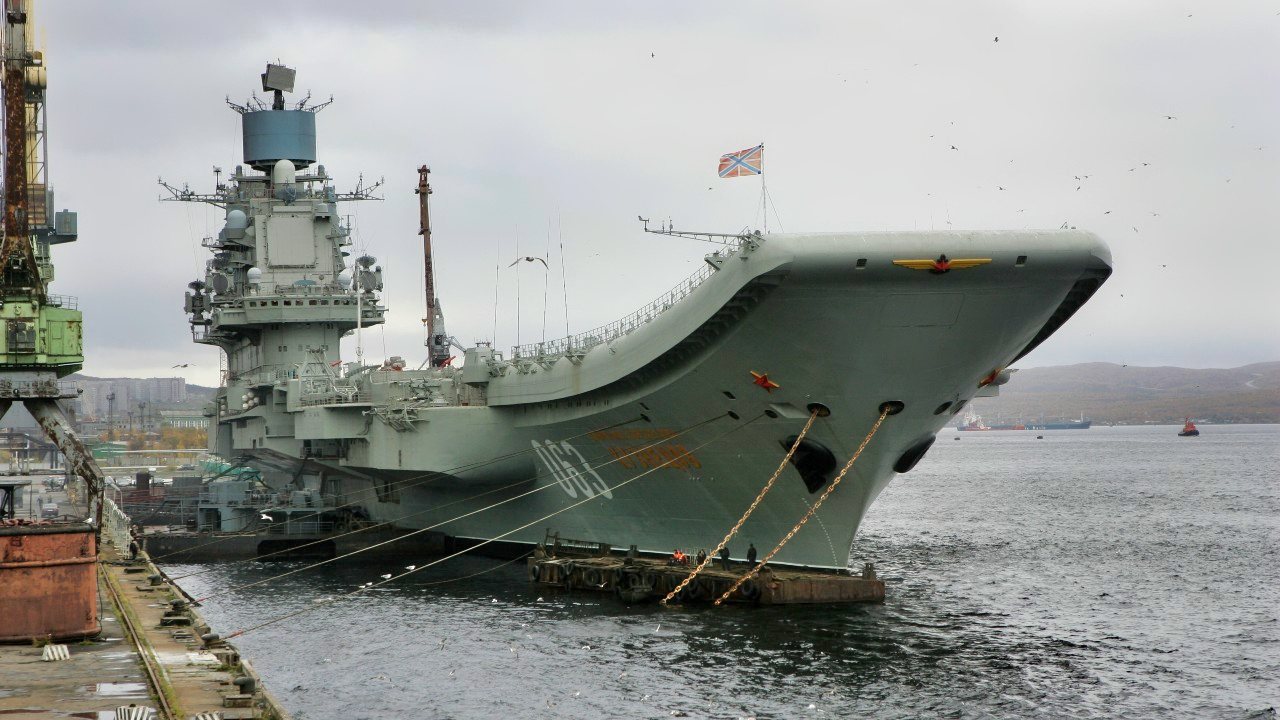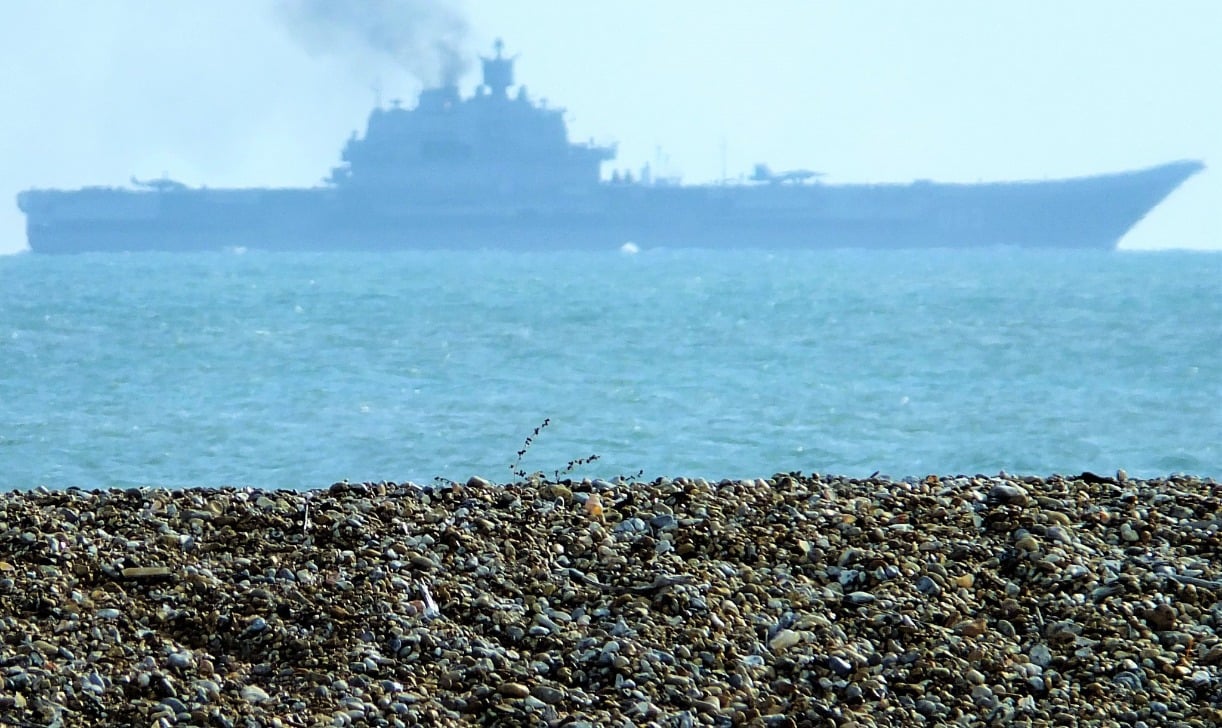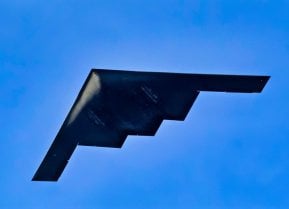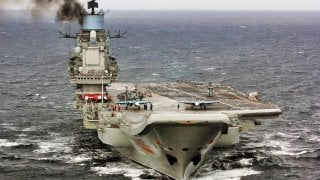Admiral Kuznetsov: Russia's Only Aircraft Carrier Is "Outdated" and "Falling Apart"
The Admiral Kuznetsov, Russia's only aircraft carrier, exemplifies the dire state of Vladimir Putin's military. Aging and plagued by mechanical failures, the Kuznetsov hasn't sailed in years and may never again.
Summary and Key Points: The Admiral Kuznetsov, Russia's only aircraft carrier, exemplifies the dire state of Vladimir Putin's military. Aging and plagued by mechanical failures, the Kuznetsov hasn't sailed in years and may never again.

-Commissioned in 1995, it operates on outdated Mazut fuel and carries far fewer aircraft than U.S. carriers.
-With a history of fires, fuel spills, and the need for tugboat escorts, the Kuznetsov is unlikely to return to service, reflecting broader issues in Russia's military capabilities.
Admiral Kuznetsov: Russia's Struggling Aircraft Carrier
The Admiral Kuznetsov is aging, outdated, and falling apart. As Russia’s only aircraft carrier, the Kuznetsov is indicative of the widespread problems that face Vladimir Putin’s military forces.
The carrier’s mechanical problems are so pronounced that the Kuznetsov has not sailed for several years. It is fair indeed to wonder whether she will ever sail again, and if so, whether the vessel will stay afloat.
This might sound like hyperbole. But back in 2011, the U.S. Navy was actually monitoring the Kuznetsov, which requires a tugboat escort, out of concern that the ship might sink.
Introducing the Admiral Kuznetsov Aircraft Carrier from Russia
Formally named the Admiral Flota Sovetskogo Soyuza Kuznetsov, Russia’s only aircraft carrier entered service in 1995. Granted, that is almost 30 years ago – but America still operates supercarriers that were built in the 1970s and maintain much higher functionality than the decrepit Admiral Kuznetsov.
The Kuznetsov is by all measures a true aircraft carrier, but she should not be confused with her American counterparts. U.S. carriers are technological marvels. They run on nuclear energy and are capable of operating indefinitely. They can project airpower anywhere around the world on a moment’s notice. The Kuznetsov, by comparison, runs on an outdated petrochemical called Mazut, which emits a black tar-like smoke and limits the time the vessel can stay at sea. Mazut was once a common source for naval energy, given the chemical’s high volume-to-energy ratio. But those days are long gone. Shipbuilders today prefer nuclear and gas turbine power sources.
And whereas U.S. carriers can carry upwards of 100 aircraft, the Kuznetsov can handle just eighteen Su-33s, six MiG-29Ks, four Ka-31s, and two Ka-27s, offering a much more modest global impact.
Beyond the limited specifications, the Kuznetsov has a problematic history, according to Robert Beckhusen. “One seaman died when the carrier caught fire during a 2009 deployment to the Med. During the same cruise, the flattop spilled hundreds of tons of fuel into the sea while refueling. Her steam turbines are so bad the ship has to be escorted by tugs in case she breaks down.”

And worse still, “the carrier is barely capable of doing what carriers are supposed to do: launch fighters. When she does, she uses a bow ramp instead of steam catapults, which forces reductions in the planes’ takeoff weight and patrol time.”
The Kuznetsov is a junker
The simple truth is that the Admiral Kuznetsov is a junker. She is unlikely to sail into the 2030s, if she ever comes out of her repair phase at all. The ship hasn’t served since 2017, when she was called home from a deployment to the coast of Syria to undergo repairs and retrofits. The retrofits were intended to give the boat another 25 years of service life, but nothing has gone as planned.

In one notable mishap, Russia’s largest floating dry dock, the PD-50, sank into the ocean, causing a 70-ton crane to crash through the deck of the Kuznetsov and open up a 200-square-foot hole. In late 2019, a fire ripped through the carrier, killing two workers and injuring 14 more. Clearly, things are not going well, suggesting the Kuznetsov might never sail again.
About the Author: Harrison Kass
Harrison Kass is a seasoned defense writer with over 1,000 articles posted. An attorney, pilot, guitarist, and minor pro hockey player, Harrison joined the US Air Force as a Pilot Trainee but was medically discharged. Harrison holds a BA from Lake Forest College, a JD from the University of Oregon, and an MA from New York University. Harrison listens to Dokken.


